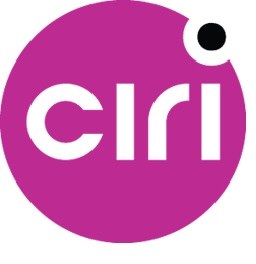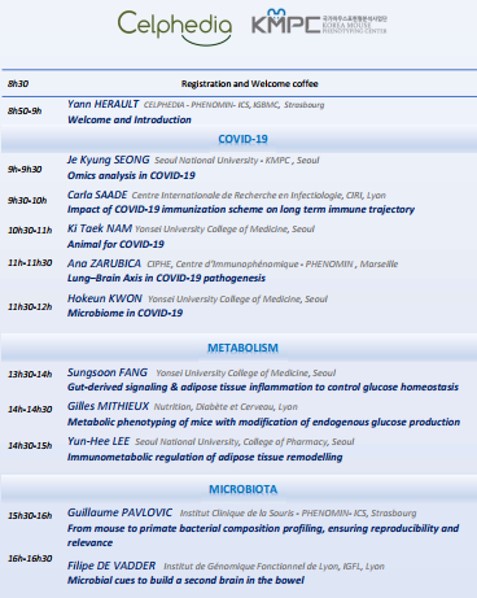Avril 2024
|
Mardi 11h00 Salle condorcet Séminaire externe |
“ DNA methylation and germinal center reaction: what Hells? ” |
|
 |
Sebastien STORCK (Institut Necker Enfants Malades, INSERM U1151, Paris)
Hôte : Laurent Genestier
Germinal center is the major source of memory B cells and long-lived plasma cells. Accordingly, the ability to form and maintain germinal centers is key to successful immunization and yet, the factors that dictate their duration and the differentiation into memory B cells and long-lived plasma cells are not fully elucidated. To address this question, we focused on a rare inherited immunodeficiency, the human ICF syndrome (Immunodeficiency, Centromeric Instability and Facial anomalies) caused by loss-of-function mutations in components of DNA methylation pathways (DNMT3B, ZBTB24, CDCA7 and HELLS). We generated an ICF mouse model with a B-cell specific deletion of the chromatin remodeler HELLS, and characterized its phenotype by cytometric, transcriptomic and methyl-seq analyses that revealed the role of HELLS and DNA methylation maintenance in sustaining the germinal center reaction and controlling its output.
|
|
|
Mercredi Day
Médiathèque Paul Zech,
(10 Rue Volney,
Campus Rockfeller,
69008 Lyon)
|
2nd KMPC-CELPHEDIA Collaborative Meeting | |
 |

|
|
|
Vendredi 10h30
salle Condorcet
Séminaire Externe |
« The evolution of organs and cell types » | |
 |
Margarida CARDOSO MOREIRA (Francis Crick Institute, Londres) Hôte: Mathilde Paris My group’s research centres on understanding the genetic and developmental bases of organ evolution. In the first part of my talk, I will describe our work on the development and evolution of sex differences. Sexually dimorphic traits are widespread among mammals and emerge during development through sex-specific gene expression programs. We know little about these programs, including the genes, regulatory networks and cell types that underlie them. It is also unclear when differences between the sexes emerge during organ development and how fast these differences evolve across mammals. We have answered these questions using bulk and single-cell gene expression time-series data from six species (human, mouse, rat, rabbit, opossum, and chicken) covering the development of five organs. In the second part of my talk, I will describe my group’s strategy for determining how morphological novelties - new cell types, new tissues, and new organs - arise during evolution. We focus on an organ that has originated multiple times independently and exhibits an extraordinary phenotypic diversity: the placenta. I will describe our work on the mammalian placenta, which I will show is a unique model to study how new cell types arise. I will also discuss our work in a family of fish (Poeciliidae) where complex placentas have evolved independently multiple times, making it a unique system to study how new complex organs arise during evolution.
|
|
|
Lundi 11h00
Salle Condorcet
|
« tbc » | |
 |
Virgile VIASNOFF (Laboratoire Nanobiophysique - ESPCI, CNRS)
Host : Olivier Hamant
|
|
|
Jeudi Day Amphithéâtre Emilie du Châtelet, INSA, Villeurbanne Colloque
|
« Colloque BactoLyon » | |

|
Organizers: S. Bigot, E. Kay and E. Gueguen
Contact: S. Bigot
11h15: Keynote speaker :
Maude Guillier (IBPC-Paris) "A genetic screen to identify the two-component systems controlled by small RNAs in bacteria » Sponsors: Région Auvergne-Rhône-Alpes, CNRS |
|
|
Jeudi 13h30
Salle Conf IBCP
Séminaire externe |
“ la technique d’immunoassay automatisé avec le système JESS “ | |
|
 |
Biotechne
plateforme PSF. Contact : Virginie Gueguen-Chaignon
13h30-14h: Café d’accueil
14h-15h: Présentation de la technologie Simple Western et de ses avantages par Romain Useo, Sales Specialist 15h-15h30 : Session Pratique de retraitement de données avec Henri- Phillipe Konan, Field Application Specialist
|
|
|
Vendredi 11h00
SdT CRC
Séminaire externe |
« Decrypting the insulator code – how extended TAD boundaries control inter-TAD encounters through loop extrusion dependent and independent mechanisms » | |
 |
Daan NORDERMEER (Université Paris Saclay) Host :Daniel Jost Topologically Associating Domains (TADs) cover regions in the genomes of higher eukaryotes where intra-domain contacts are increased over their surroundings. Mammalian TADs are enriched for the binding of the CTCF insulator protein at their boundaries, which can prevent the formation of enhancer-promoter loops between neighbouring domains. Mechanistically, TADs are shaped by a process of active Cohesin-mediated loop extrusion, resulting in intra-TAD chromatin compaction, followed by blocking of this process at the boundaries by the CTCF protein, creating inter-TAD separation. How optimal separation between neighboring TADs is achieved remains incompletely understood.
We recently reported that the separation between most TADs extends over zones spanning several tens of kilobases, where local interactions are enriched. Most extended TAD boundaries contain multiple sites of CTCF binding, indicating multiple instances of loop extrusion blocking. Indeed, using a Nano-C assay, a newly developed multi-contact 3C assay, we could show that individual CTCF binding sites are permeable sites of loop extrusion blocking. Within extended TAD boundaries, individual CCTF binding sites thus additively contribute to the loop extrusion blocking capacity.
Here, I will discuss collaborative efforts where we combined genomics data analysis and biophysical modeling approaches, to further characterize the extended nature of TAD boundaries. Using mouse cells as a model, we find that the span of TAD boundaries is highly variable. This variation is directly linked to the distribution of CTCF and other chromatin factors. Using a generalized random-crosslinked polymer model, we determined optimal chromatin configurations to reproduce different types of TAD boundaries. Moreover, we used these configurations to determine their impact on longer-range inter-TAD encounters. Interestingly, we found that narrow TAD boundaries are associated with a considerable increase in spurious inter-TAD contacts. This may be explained by the “reeling in” of neighboring TADs by the Cohesin complexes that may be blocked at the boundary in the middle. These increased spurious inter-TAD contacts were not observed at extended boundaries. As such, wider boundaries improve TAD insulation both by reducing loop extrusion readthrough and the reduction of spurious contacts with neighboring TADs. I will discuss how these effects, and the associated DNA-encoded patterns of CTCF binding, may be used for the fine-tuning of enhancer promoter loop formation and gene regulation.
|
|
|
Vendredi 12/04/2024 8h30 à 14h30
Charles Mérieux amphitheater
Journée Scientifique
|
Equipex+ Spatial-Cell-ID day | |
|
Registration to the meeting is free but mandatory. https://framaforms.org/2024-spatial-cell-id-meeting-on-april-12-1708604662 Program |
||
|
Mardi 11h00 Amphi Pasteur Séminaire externe |
“ Interferons as mediators of virally-triggered intestinal damage ” | |
|
|
Lucie BERNARD-RAICHON(postdoctoral researcher in Ken Cadwell's lab, Perelman School of Medicine at the University of Pennsylvania)
Hôte : Thomas Henry
Polymorphism in the autophagy gene ATG16L1 increases the risk for Crohn's disease but the high frequency in the general population indicates that it is insufficient to explain disease development. Murine norovirus (MNV) CR6 is an asymptomatic persistent enteric virus in WT mice. However, it leads to a Crohn's disease-like phenotypes in mice expressing low levels of autophagy. Interestingly, some of these phenotypes are also observed in mice infected with SARS-CoV-2. During my talk, I will share recent data obtained using mouse models and organoid models showing how viruses inducing high levels of pro-inflammatory cytokines (such as interferons) may alter intestinal permeability, in particular in genetically susceptible hosts
|
|
|
Lundi 11h00
Salle Condorcet
RDP career day
|
« tbc » | |
 |
Sara SIMONINI (University of Zurich)
Host :Alice Hugues
|
|
|
|
||
|
|
||
|
|
|
|


